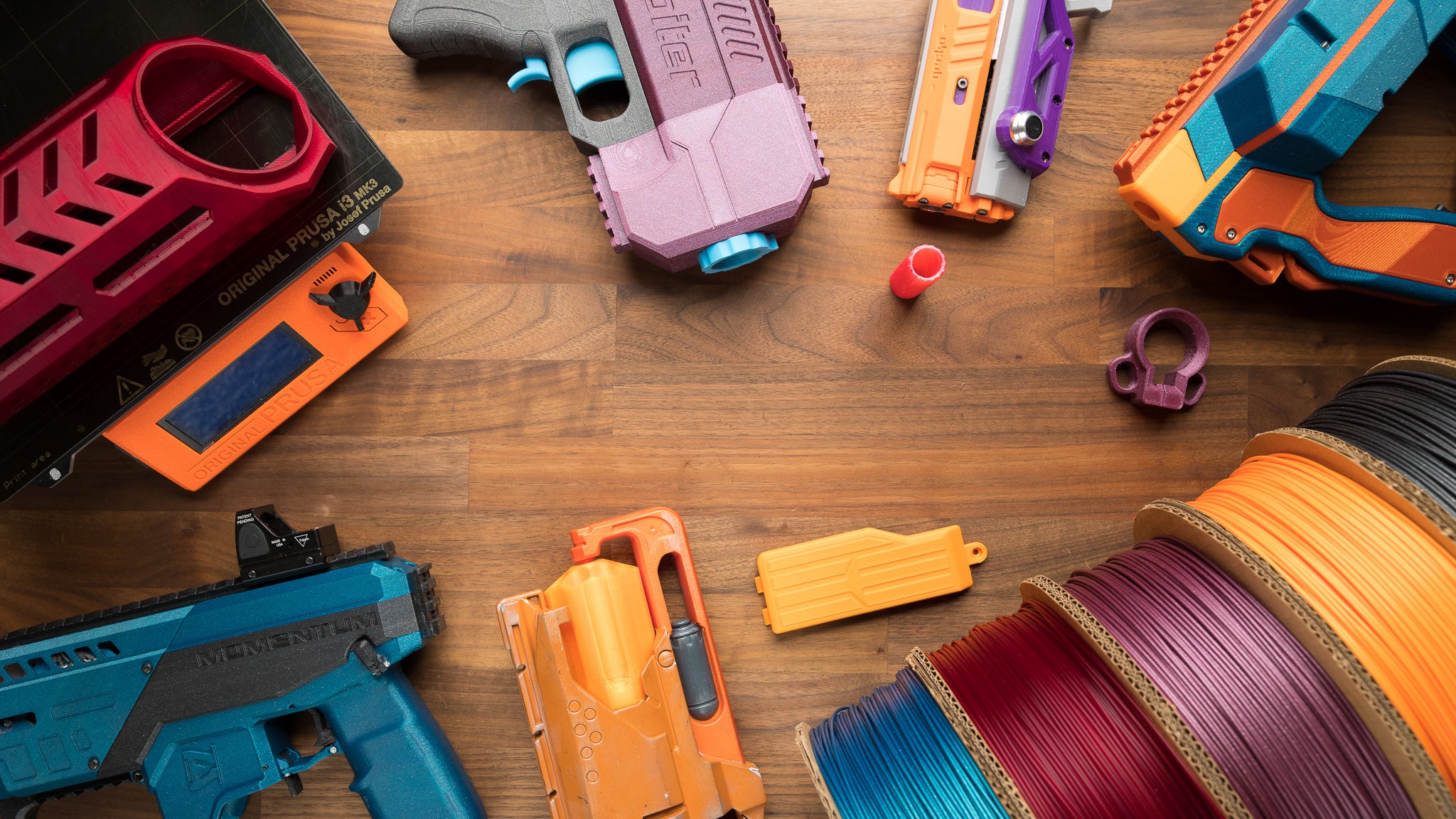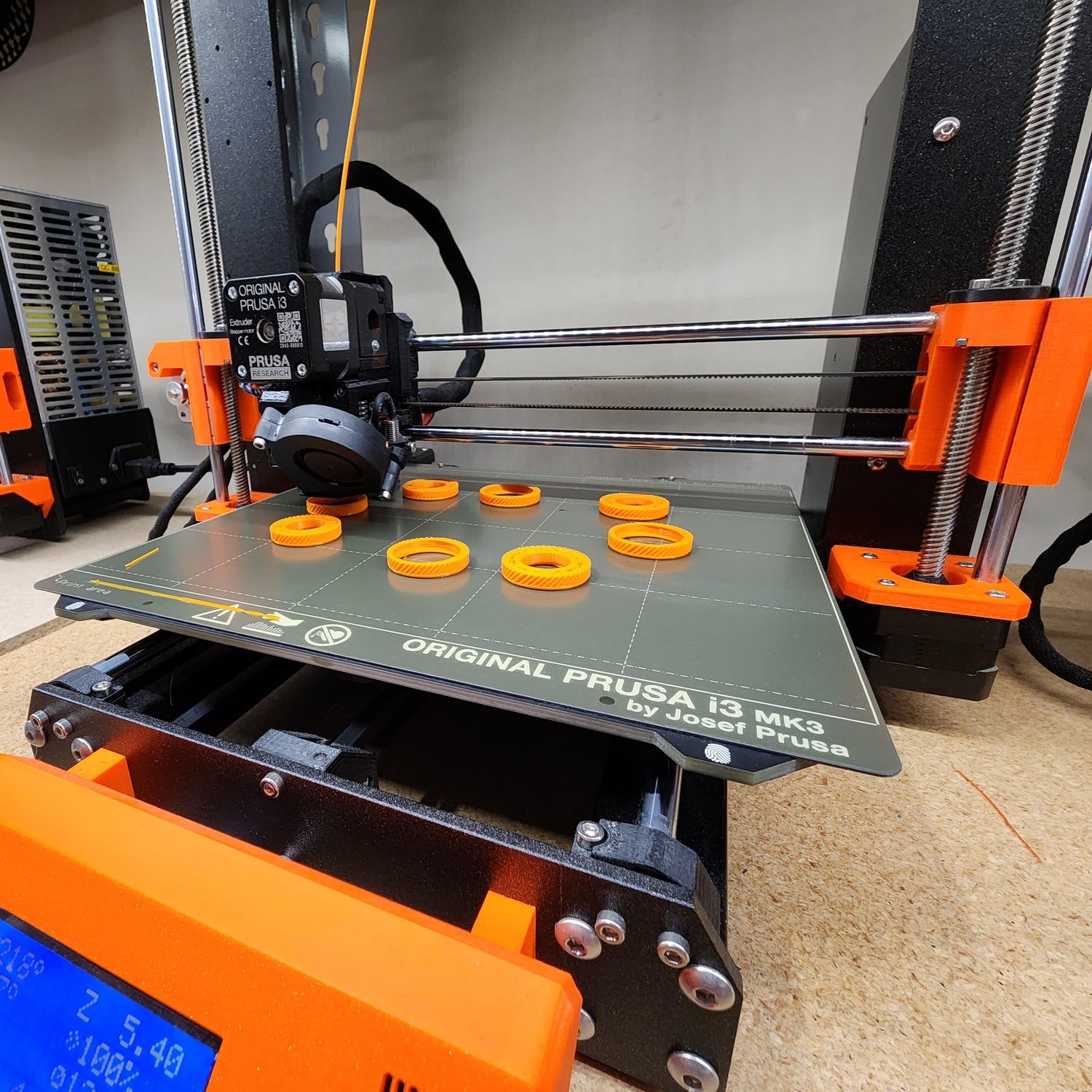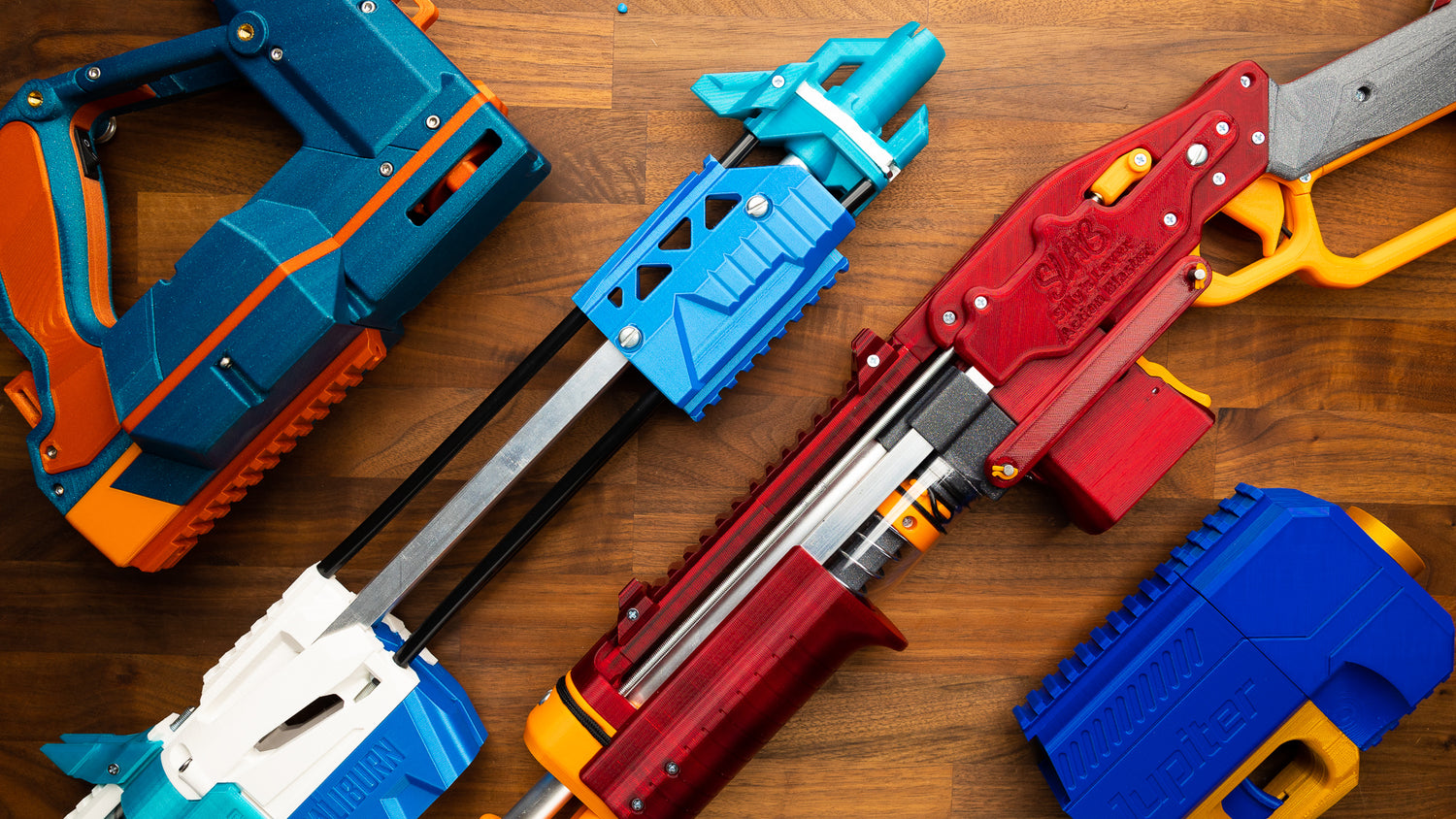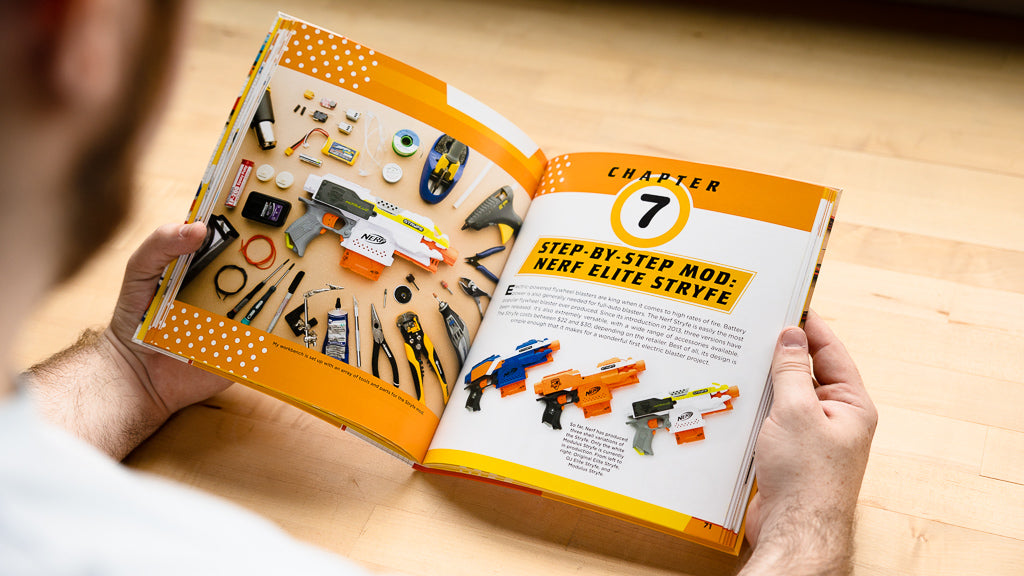
3D PRINTING BLASTERS

A Revolution In Accessible Manufacturing
Over the last ten years or so, more and more people have discovered the joy of making through 3D printing. Many creators, repositories, and businesses have sprang up because of this -- ourselves included.
The way 3D printing has democratized design and closed the gap between idea and polished product is unparalleled. Though we now sell a variety of products using other manufacturing methods, would not be where we are without the speed and flexibility 3D printing provides.

3D Printing + Nerf
The blaster tag hobby is by far the most effective use of 3D printing at home! The combination of 3D-printed plastic with hardware and other structural components blends form and function in a way rarely seen elsewhere
More just a pretty wall ornament, a 3D-printed blaster can make a functional prop replica, an educational STEM project, and more. The possibilities are endless.
Additionally, 3D printing and designing can become vocational training. Some notable hobbyists have applied their skills to become engineers for big-name manufacturers both inside and outside foam-flinging space!

A Creative Commons Culture
When we released the OOD Jupiter, we were perhaps only the third creator to release a 3D-printed blaster design to the public. Now there are literally hundreds of talented designers creating unique designs. Some of them are even free to download!
For those with a printer, dozens of polished blasters are ready for you to print and assemble yourself -- some with hardware sourced and bundled as kits.
No printer? No problem! Many of these can be either purchased as 3D parts + hardware kits, or fully-assembled blasters.
3D PRINTING NERF BLASTERS
3D Printer Recommendations:
Bambu Lab A1: The newest model to hit our fleet and our new primary workhorse 3D printer. These bed-slingers are the closest we've gotten to an appliance-type printer, with speed, print quality, and user experience unlike anything else, and all for less than half the price than other quality competitors. If you're beginning your 3D printing journey, this is currently the printer to get!
Bambu X1 Carbon: This printer made a splash on the scene in 2022. A high-end Core XY printer at a phenomenal price. We currently run two of these for polycarbonate and other temperature-sensitive prints. Their feature set is fantastic, and they've proven reliable after nearly two years of continuous use.
Prusa i3 MK3s (affiliate link): This workhorse printer is what ran our farm for years. We had over 80 of these bed slingers at their peak. At $799 for a kit and $1,099 assembled, it was far from the most affordable printer. However, it proved to be very reliable and repairable thanks to first-party, third-party, and community support. We still recommend them for this reason, especially if you can get a good price in the used market.
Slicing Software:
3D printers usually aren't that smart. Instead, they rely on a separate computer and slicer program to tell it what to do. G-code is a set of machine-readable instructions that drive every part of the 3D printer it's designed to work with. This includes tool head location, the extruder settings, print bed temperature, and more.
There are dozens of popular slicer programs out there. However, we recommend using the slicer that was developed and fine-tuned by your 3D printer's manufacturer. We've used Bambu Studio and Prusa Slicer for each of our workhorse fleets over the years with very little headache.
Quality USA-Made Filament:
A 3D printer is only as good as the filament you put through it! That's why we've partnered with Proto-Pasta as our exclusive PLA filament supplier. Proto-Pasta is a premium filament manufacturer local to us here in Vancouver, Washington, USA, and they constantly supply us with reusable and recyclable cardboard spools full of fun colors for us to print with.
If you want to match your prints to a mod part or blaster you got from us, our current selection of colors are also available right here at Out of Darts!
Popular Blaster Designers:
For beginners, we suggest printing a springer blaster as their first build. They don't require any soldering or special skills, and are often as easy to put together as a Lego set.
Captain Slug is a legendary creator in the hobby, first cutting his teeth making old-school homemade blasters out of PVC. His Caliburn and Talon Claw series of blasters were born out of this background. Captain Slug was actually a huge inspiration for starting Out of Darts nearly a decade ago!
Sillybutts is a madman when it comes to Computer-Aided Design (CAD), and we mean that in the best possible way! Despite his young age, he has a sizeable collection of blaster designs that keeps growing every few months. He regularly updates followers with his new projects on YouTube.
Taffy of Charamile Designs is another respected designer who recently was awarded a design patent and worked with Buzz Bee to get a licensed version of his Skewer blaster injection-molded.
Note: While many 3D printing files available online are open-source, many still fall under Creative Commons or other limited-use licenses. Please pay attention to any license agreements before downloading 3D printing files, and be a good steward of community designs.
3D Printing YouTube Channels:
The 3D Printing Nerd: Joel is a friend to the OOD channel and shop, having visited OOD HQ on two different occasions. He showcases many different printers, designs, and makers on his channel.
Makers Muse: Angus is a educational YouTuber who showcases interesting mechanisms, puzzle boxes, and designs. He aims "to empower creativity through technology," and he doesn't disappoint.
Free CAD Programs:
If you're feeling brave, there are a few CAD programs out there that are free for individuals! There are also tons of free tutorials on YouTube to help you navigate any new software.
Autodesk Fusion 360 is perhaps the gold standard of software for hobbyists. While it has its learning curve, and the free version is limited to ten editable files at any given time, it still really can't be beat for it's functionality. Most of the OOD Team and our licensed designers work with Fusion 360.
TinkerCAD is Autodesk's entry-level software geared towards youth and young adults. Its simplicity makes it easy to learn for beginners, but also very limiting once you try to make more complex shapes. Still, we recommend it for quick projects and for teaching younger hobbyists.
Onshape is a CAD program with loose ties to the industry-standard, SolidWorks. Being cloud-based, it can run on virtually any computer as long as it has a decent internet connection. The biggest limitation with the free version is with model privacy, but for casual hobbyists and open-source creators, this is still a great option.
Blender is usually considered a 3D modeling software for computer animation and video game design, but an open-source CAD plug-in actually makes it quite capable. If you're already familiar with Blender, this plug-in is an easy way to get into dimensioned 3D design for 3D printing.
